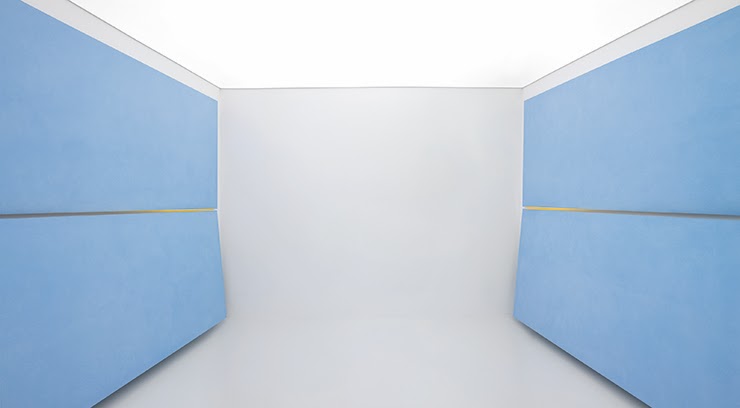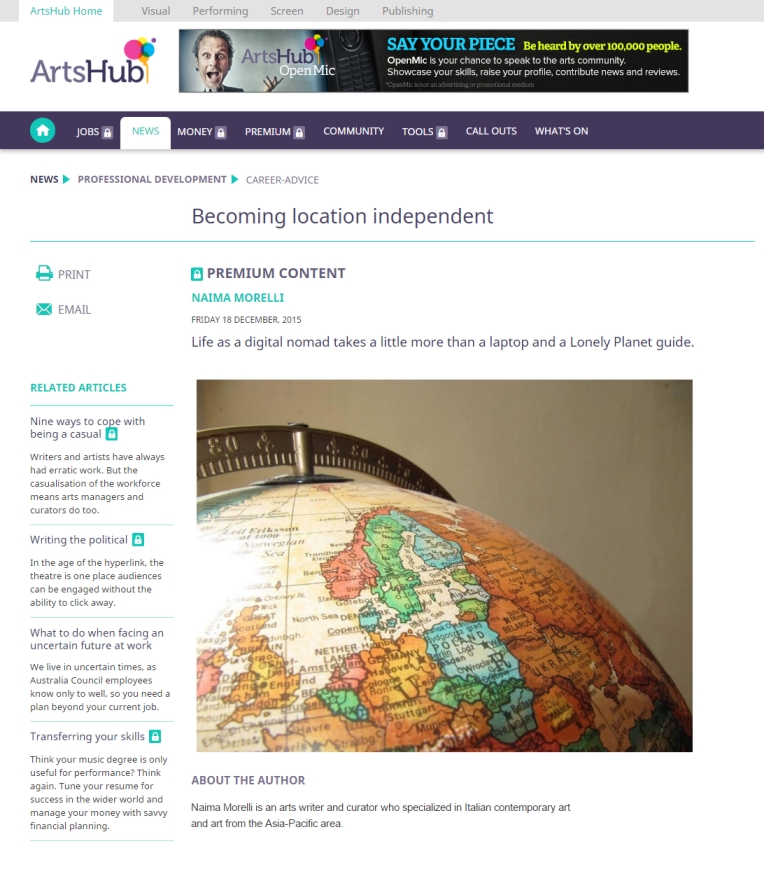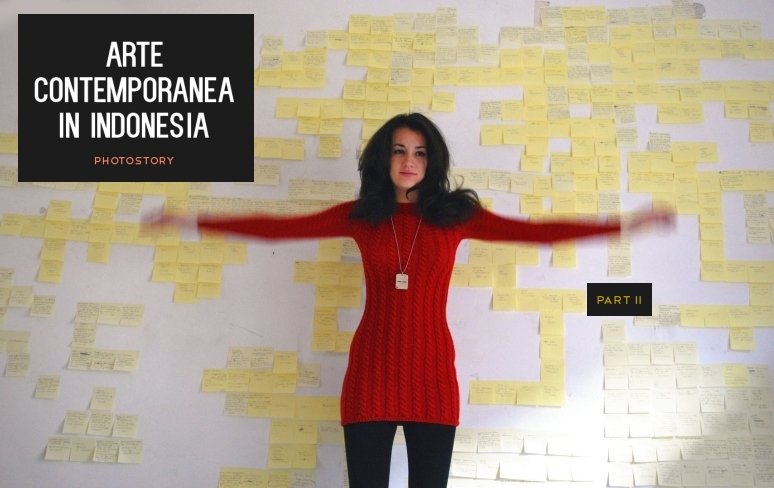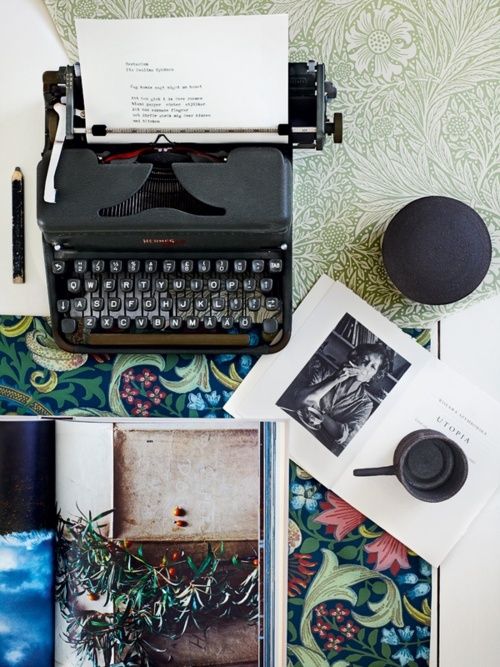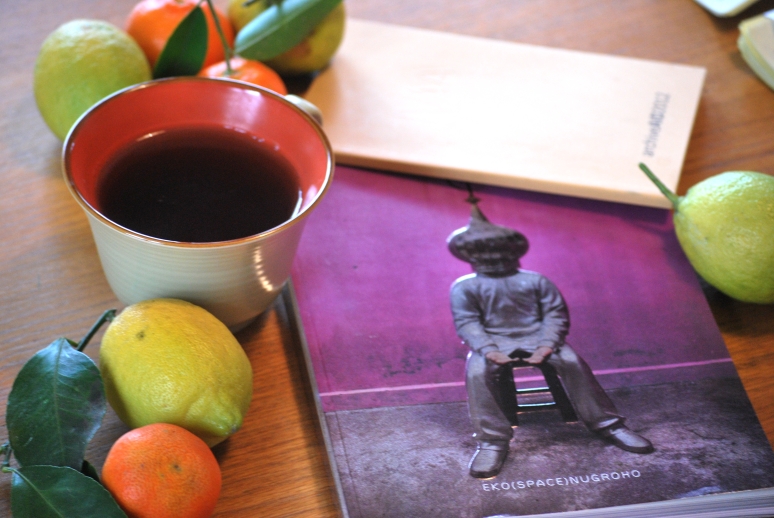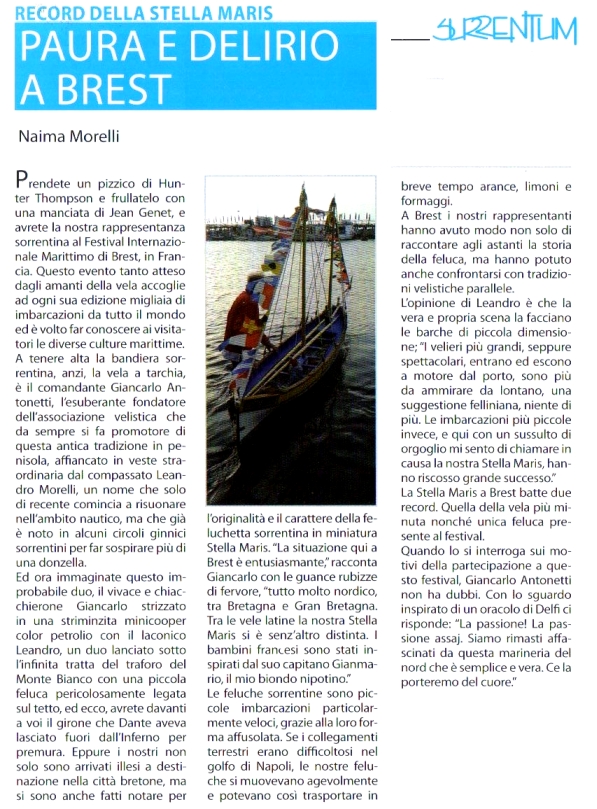
Among the art pieces I write each month, every now and then I churn out a funny one. This time the Sorrento local magazine Sorrentum was looking for a short write-up about the participation of the miniature sail boat Stella Maris and its team of two to the annual maritime festival of the French city of Brest (the same one of Jean Genet’s “Querelle de Brest”). Half of the team was Capitain Giancarlo Antonetti – a super-chatty sea dog and certifiable nuts – and the other was my brother, who is by far the sternest and most taciturn person I have ever met.
In the article I imagined the two-days long car trip of the two from Italy to France. You can read the piece on the August issue of Sorrentum or, more straightforwardly, below. It is in Italian, but the title can translate as “Fear and Loathing in Brest”
Paura e Delirio a Brest
Prendete un pizzico di Hunter Thompson e frullatelo con una manciata di Jean Genet, e avrete la nostra rappresentanza sorrentina al Festival Internazionale Marittimo di Brest, in Francia. Questo evento tanto atteso dagli amanti della vela accoglie ad ogni sua edizione migliaia di imbarcazioni da tutto il mondo ed è volto far conoscere ai visitatori le diverse culture marittime.
A tenere alta la bandiera sorrentina, anzi, la vela a tarchia, è il comandante Giancarlo Antonetti, l’esuberante fondatore dell’associazione velistica che da sempre si fa promotore di questa antica tradizione in penisola, affiancato in veste straordinaria dal compassato Leandro Morelli, un nome che solo di recente comincia a risuonare nell’ambito nautico, ma che già è noto in alcuni circoli ginnici sorrentini per far sospirare più di una donzella.
Ed ora immaginate questo improbabile duo, il vivace e chiacchierone Giancarlo strizzato in una striminzita minicooper color petrolio con il laconico Leandro, un duo lanciato sotto l’infinita tratta del traforo del Monte Bianco con una piccola feluca pericolosamente legata sul tetto, ed ecco, avrete davanti a voi il girone che Dante aveva lasciato fuori dall’Inferno per premura.
Read More